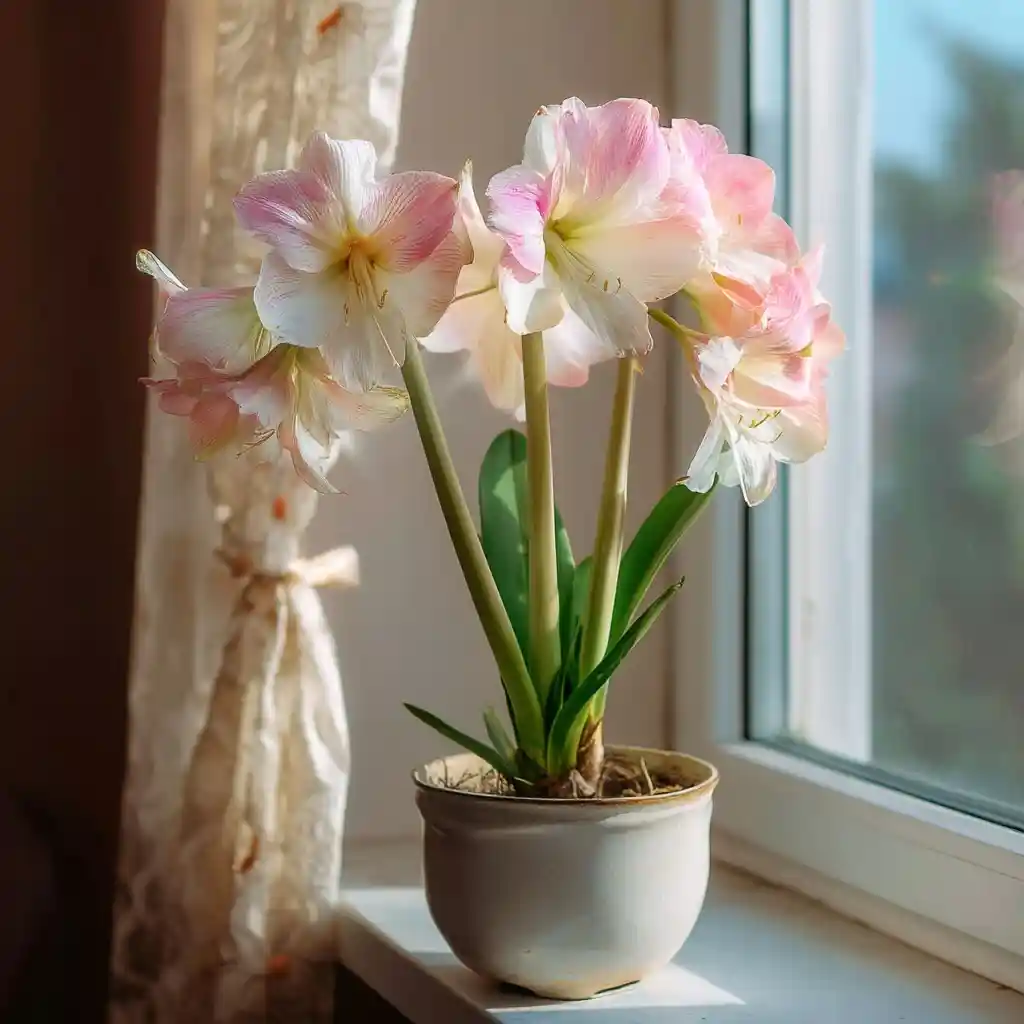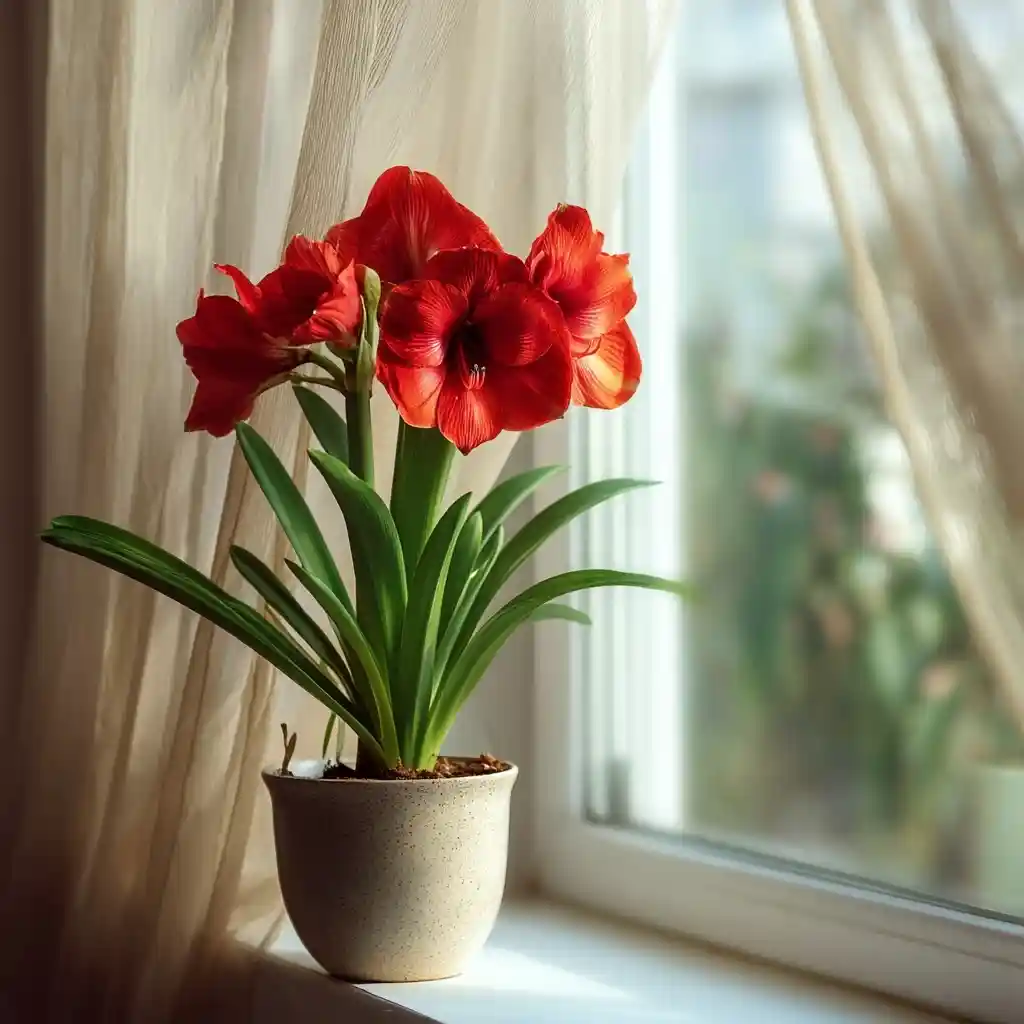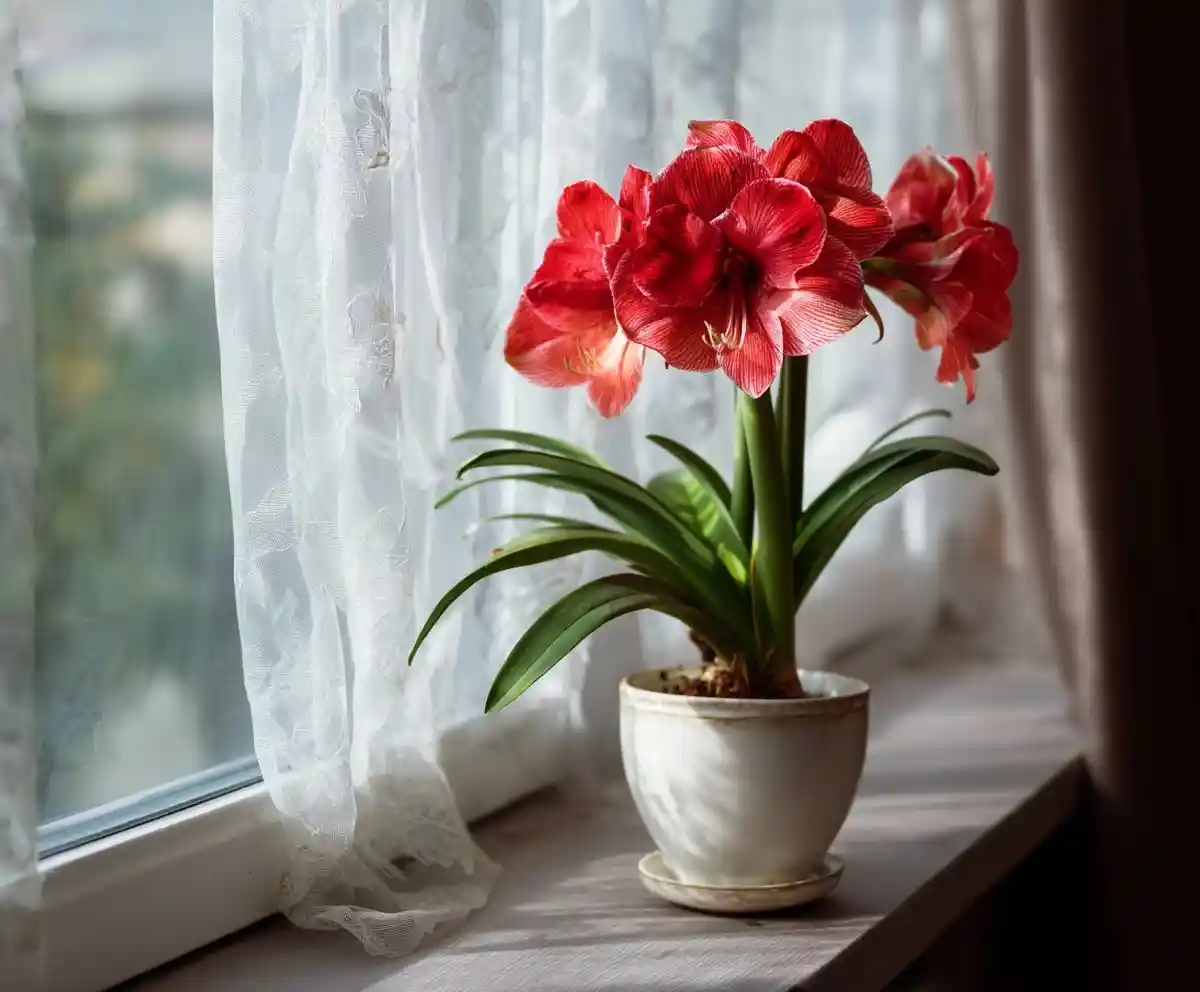Amaryllis is one of those rare bulbs that bring vibrant color and cheer to any indoor space, especially during the duller months of winter. Whether you’re a seasoned green thumb or just starting your indoor gardening journey, growing amaryllis is a rewarding experience that doesn’t demand too much time or effort. With its large trumpet-shaped blooms and bold hues ranging from scarlet red to snowy white, this bulb is often gifted during the holidays—but its beauty extends far beyond the season.
Many people receive an amaryllis bulb and aren’t quite sure what to do next. Should you plant it immediately? Can it rebloom next year? How much water does it really need? The good news is, with just a few simple steps, you can enjoy weeks of stunning flowers and even coax it to bloom again year after year.
In this guide, we’ll walk through everything you need to know about how to plant, grow, and care for amaryllis indoors—from potting and lighting tips to troubleshooting common problems.
Table of Contents
How to Plant Amaryllis
Planting amaryllis bulbs is a straightforward process, even for beginners. Start by choosing a container that’s just a bit wider than the bulb itself—about one to two inches of space on each side is ideal. Make sure the pot has drainage holes to prevent water from pooling at the bottom, which can lead to rot.
Fill the container with well-draining potting soil until it’s about one-third full. Place the bulb in the center with the pointed tip facing up and the roots resting gently on the soil. Fill in more soil around the bulb, keeping the top third exposed above the surface.
Water thoroughly after planting, then hold off on watering again until new growth appears. This helps reduce the risk of rot. Keep the pot in a warm location with bright, indirect light—not direct sun, which can scorch new shoots.
If your amaryllis begins to grow tall quickly, consider staking the stem to keep it upright. The blooms are large and can cause the plant to lean if unsupported.
Light
Proper lighting is crucial for strong, upright amaryllis growth. Position the pot near a bright window where it can receive 6–8 hours of indirect sunlight daily. East- or west-facing windows are usually best.
Avoid placing your plant in direct afternoon sun, as it can scorch the leaves. To promote balanced growth, rotate the pot every few days so that all sides of the plant receive equal exposure to light.
If you notice pale or leggy leaves, that’s a sign your amaryllis isn’t getting enough light. In darker months, consider using a grow light to supplement natural daylight.
Healthy amaryllis leaves should be firm and deep green. Keeping the light consistent is key to producing tall stems and vibrant flowers.
Soil

For the healthiest bulbs, amaryllis needs loose, nutrient-rich, and well-draining soil. A high-quality potting mix that includes peat moss, perlite, or coconut coir is ideal. These materials help retain moisture without becoming waterlogged.
When planting, ensure the bulb sits snugly but not tightly in the soil. Leave the top third exposed above the surface to reduce the chance of rot. A tight fit in the pot will help support the bulb as it grows.
During the growing phase, keep the soil slightly moist, watering only when the top inch or two feels dry to the touch. After the blooming period ends, reduce watering significantly as the plant enters dormancy.
A dry rest period is essential for amaryllis to rebloom the following season.
Water
Watering amaryllis correctly is one of the most important factors for success. Start by watering deeply after planting to help settle the bulb. Then hold off until green shoots emerge.
Once the plant is actively growing, water whenever the top 1–2 inches of soil feel dry. That usually means watering about once a week, depending on humidity and temperature.
Always allow excess water to drain out completely. Never let the pot sit in standing water, as this can lead to root or bulb rot.
As the blooming season ends and the leaves begin to fade, reduce watering gradually. When the plant goes dormant, stop watering altogether until new growth begins again.
Temperature and Humidity
Amaryllis thrives in moderate indoor temperatures. During the active growing phase, aim for a range between 60°F and 70°F (15°C–21°C). These temperatures support strong leaf and stem development.
Once buds appear, slightly cooler conditions—around 55°F–65°F—can help prolong the bloom time.
Avoid placing your plant near heat vents, radiators, or drafty windows. These can create sudden changes in temperature or dry air that may stress the plant.
High humidity can also be a problem, especially in poorly ventilated rooms. If you notice condensation or mold around the bulb, consider using a small fan or moving the plant to a drier area.
During dormancy, store your amaryllis in a dark, cool space around 50°F–55°F for about 8–10 weeks to reset its bloom cycle.
Fertilizer

Once your amaryllis has grown a few inches of leaves, it’s time to start feeding it. Use a balanced liquid fertilizer every 2–3 weeks throughout the growing season. Look for a product with equal parts nitrogen, phosphorus, and potassium (like a 10-10-10 blend).
Avoid fertilizing the bulb before it has any leaves. Doing so may damage the roots or encourage rot.
When the plant begins to slow down and enter dormancy—usually in the fall—stop fertilizing entirely. This rest period helps the bulb store energy for the next blooming cycle.
After dormancy, resume fertilizing once new green shoots appear. This will support strong growth and large, vibrant blooms in the next round.
Propagation
There are two main methods to propagate amaryllis: division and seed.
By Division:
In the fall, when the plant is dormant, you can divide small bulbs (called offsets) from the parent bulb. Gently remove the offsets and let them dry for a few days before potting them in fresh soil. Keep in mind it may take 2–3 years for these bulbs to bloom.
By Seed:
Less common but still possible, amaryllis can be grown from seed. After flowering, allow the seed pods to mature and split open. Plant the seeds immediately in light, moist soil. Germination takes a few weeks, but it can take up to six years before flowering.
Both methods require patience, but division is usually faster and more reliable for home gardeners.
Pruning
Pruning helps your amaryllis stay healthy and focused on growth. After the flowers fade, cut the flower stalk down to about an inch above the bulb. This directs energy back into the bulb rather than seed production.
Leave the leaves in place as long as they’re green. They continue to photosynthesize and store energy for future blooms. Only trim leaves when they turn yellow or brown.
Use sharp, clean scissors or garden shears to prevent damaging the bulb. When the plant goes fully dormant, remove all dried foliage and store the bulb in a cool, dark place.
Pruning at the right time promotes better reblooming and reduces stress on the plant.
Potting and Repotting
When potting a new amaryllis, choose a snug container—just an inch or so wider than the bulb. It should have proper drainage holes and hold the bulb securely, with the top third exposed above the soil.
Use fresh, well-draining potting mix, and water thoroughly after planting.
Repotting isn’t needed every year. In fact, every 3–4 years is sufficient. Do this at the end of the dormancy period. Remove old soil, check the bulb for rot or pests, and replant it in fresh soil.
A slightly larger pot can be used if the bulb has outgrown the current one, but avoid giving it too much space, which can slow growth.
Common Problems & Troubleshooting
Even though amaryllis is a low-maintenance plant, it can still face a few issues:
❌ Bulb Rot
Caused by overwatering or poorly drained soil. Always ensure drainage holes are working, and avoid watering until growth appears.
❌ Pests
Watch for aphids, spider mites, or mealybugs. Wipe them off with a damp cloth or use insecticidal soap if needed.
❌ No Blooms
Often due to skipping the dormancy phase. To trigger blooming, allow the bulb to rest for 8–10 weeks in a cool, dark place.
❌ Yellow Leaves
Usually from too little light or too much water. Move the plant to a brighter spot and reduce watering frequency.
With the right care and environment, most of these issues can be easily avoided or corrected.
Conclusion
Growing amaryllis indoors is a satisfying way to brighten up your home with striking flowers that return year after year. With just a bit of attention to light, water, temperature, and rest periods, you’ll enjoy healthy, long-lasting blooms and maybe even inspire a new gardening hobby.
Whether you’re planting your first bulb or trying to rebloom last season’s favorite, amaryllis is a joy to grow.


